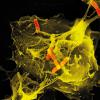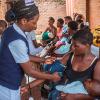Is autoimmunity on the increase? Epidemiological evidence. Details of five autoimmune diseases are presented.

Due to their frequency and number of different types, around one in 10 individuals are affected by one or more autoimmune diseases (ADs) worldwide. This represents a significant burden on the provision of healthcare resources. It is also of great concern that it appears that the incidence of certain ADs has increased over recent decades, and significantly is now rising in previously low-incidence areas, such as Asia and the Middle East. Dramatic headlines in the national press and non-scientific literature have rightly drawn public attention to this situation.
Click here to read the full article.
Image credit | Science-Photo-Library | iStock | Shutterstock




